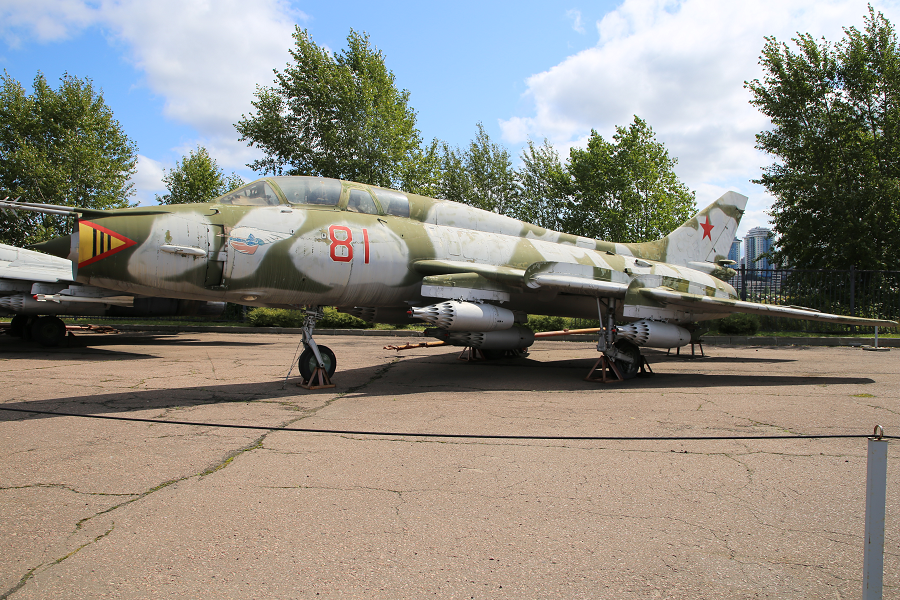A Soviet Su-17 UM-3 fighter-bomber. Developed in 1966. Crew – 2, armament – 30 mm NR-30 gun, ammunition – 80 30 mm shots; six NAR UB-32 outboard blocks, speed – 2230 km/h, ceiling – 14300 m, flight range – 1500 km
The Sukhoi Su-17 (izdeliye S-32) is a variable-sweep wing fighter-bomber developed for the Soviet military. Its NATO reporting name is “Fitter”.
Although the Su-17 was nuclear capable, it was used in roles ranging from close-air support to ground attack.
Developed from the Sukhoi Su-7, the Su-17 was the first variable-sweep wing aircraft to enter Soviet service. It featured updated avionics.
Two subsequent Sukhoi aircraft, the Su-20 and Su-22, were Su-17 variants.
It was produced from 1967-1990. The Su-17/20/22 series had a long career and has been operated by many air forces, including those of the Russian Federation, former Soviet republics, former Warsaw Pact, countries in the Arab world, Angola, and Peru. The Russian Federation retired its fleet in 1998.
Shortly after the Su-7 fighter-bomber was put into service, the Sukhoi Design Bureau was ordered to develop a modernization program. The program would be aimed primarily at updating on-board avionics and takeoff/landing characteristics. The concept of variable-geometry wings – something gaining wider attention at that time – was adopted. The program was to be led by Sukhoi’s head designer, Nikolay Zyrin.
In 1963 the Sukhoi OKB with input from TsAGI created a variable-sweep wing technology demonstrator. The S-22I (also known as the Su-7IG, NATO designation “Fitter-B”), converted from a production Su-7BM, had fixed inner portions of the wing with movable outer segments that could be swept to 28°, 45°, or 62°.
The S-22I first took off (with Vladimir Ilyushin at the controls) on 2 August 1966. It was later demonstrated at the air parade in Domodedovo in July 1967.











